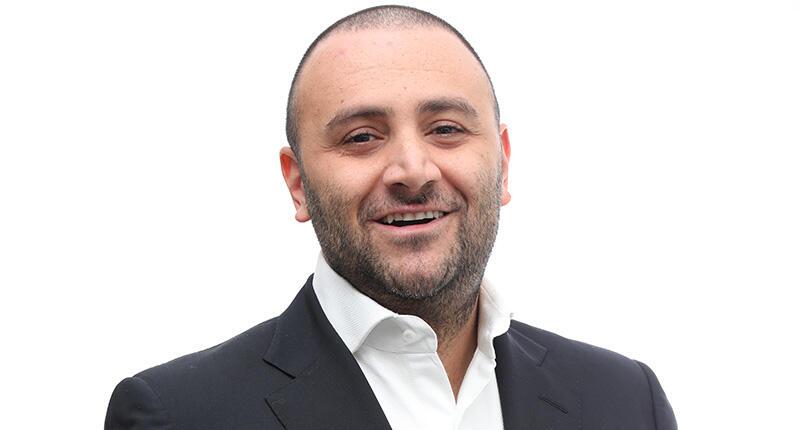Peter Smith: How a Leadership Hire Can Make or Break a Company
In his latest column, Smith provides a list of questions every business needs to be asking their next potential leader.

While those effects are not confined solely to leadership, there can be little doubt that the top position in any company can define a business for years, either positively or negatively.
The Drosos story will, I expect, be better understood with the passage of time.
She appears to have righted a ship that struggled to navigate internal cultural challenges for years and must be given credit for the company’s outstanding performance amidst the global pandemic, when shopping malls contracted from 1,000 or so to a number fast approaching 400.
Whether it was a good idea for Signet to embrace lab-grown diamonds at a time when mall traffic is in decline (“lower average ticket” plus “fewer unit sales”) is a question worth asking.
With PetSmart’s J.K. Symancyk announced as Drosos’ replacement, it is also reasonable to ask, why was no succession plan in place? How does a company of that size not have a core base of executives from which a new CEO might emerge?
While the comings and goings of key personnel at $7 billion companies will always make headlines, there are, of course, less celebrated announcements that happen throughout the jewelry business on a regular basis.
To the companies making these hires, each one is just as important as the changes at Signet.
Every key hire brings with it the promise, or at least the hope, of a better path for the hiring company and a renewed optimism that the arriving leader can chart a better course.
In some cases, the new hire arrives because a once-relevant business has lost its way, perhaps even been passed by in the industry, and the seemingly Sisyphean task of getting things turned around lives and dies with a succession of executive hires and their attempted resuscitations.
In other instances, the business might be suffering from the “curse of the entrepreneur,” a condition in which the qualities that were so critical in founding the company (courage, creativity, innovation, risk-tolerance, etc.) give way to different needs as the business matures.
The founder continues to dream big when what’s really needed is a steady hand and the often-boring work of structure, discipline, and consistency.
“If you insist on equating tenure as a guarantee of competency, I’ve got a bridge I’d like to sell you.”— Peter Smith
In making senior hires, companies seem to have a default position that a given candidate must be qualified and competent based purely on the strength of them having served in a similar capacity with another organization in our space.
Experience and proximity somehow morph into perceived competency, often with little underlying justification.
So, if you find yourself thinking about making an important executive hire, don’t accept empty platitudes and euphemisms about their capabilities and accomplishments.
Challenge the default position that they must necessarily be good because they previously worked at company X or Y for years.
The possibility that they may have sucked in that job rarely enters the equation in our haste to see what we want to see. And if you insist on equating tenure as a guarantee of competency, I’ve got a bridge I’d like to sell you.
There are no shortcuts to understanding whether someone might be right for your business or not, but such an important decision ought to warrant a serious exploration of suitability in terms of both competence and cultural fit. The latter, I should point out, is no less important than capability.
A few questions to augment your work on assessing the candidate might include the following:
“What are you most proud of in your last position? Walk me through why that is and how you got there.”
In answering those questions, are they talking about the Big Rocks, the things that make the most difference in the business?
Are they pointing to something tangible that led to sales and profitability growth?
Do they give you examples of specifics that suggest veracity in their answers?
Another important question might be, “What is your vision for this brand? And can you give me a sense for what the roadmap might look like?”
Does the answer suggest the candidate has given real thought to what your brand is about?
Do they get the essence of what you believe your brand means, and does the answer promise a path that is feasible, or are they filling space with empty platitudes?
Don’t assume because they say “strategy” a lot, that they have a clue what strategy means. Former Southwest Airlines CEO Herb Kelleher once said, “Sure, we have a strategic plan. It’s called doing things.”
What does your candidate intend to do?
Ask them, “What do you imagine your first 90 days might look like? What will your priorities be if you were to be hired for this role?”
You’re not looking for a definitive GPS for those first 90 days, but you need to know that the candidate’s priorities speak to the things that are most important to the business, and they should credibly sound like they can execute around those key challenges.
Tell them what your single biggest issue is and ask them why they believe they are qualified to tackle that problem.
Ask them what they expect their biggest obstacles to be. Ask them if a year from now they have failed, why might that be?
Your next key executive may not have the seemingly herculean task of the Signet CEO, but to any given business, there is nothing more important than that leadership hire.
Stop rewarding tenure as though keeping your head above water was a good strategy for charting the critically important course for your business now.
Have a great holiday season and have fun planning for next year!
The Latest

In the recent multi-shipment seizure, CBP also found counterfeit Audemars Piguet, Moncler, and Chrome Hearts items.

Helzberg’s Chief Retail Officer Mitch Maggart shared details about its tests of a new store concept rooted in an elevated luxury experience.

Jewelers of America execs and National Jeweler editors discuss tariffs, the sky-high gold price, and the engagement that broke the internet.

How Jewelers of America’s 20 Under 40 are leading to ensure a brighter future for the jewelry industry.

The luxury goods company said founder Ippolita Rostagno will remain at the brand’s helm.


Laura Burdese, who joined the Italian luxury brand in 2022, will take on the role in July.

The National Jeweler editors revisit the most noteworthy industry happenings and design trends from 2025.

Roseco’s 704-page catalog showcases new lab-grown diamonds, findings, tools & more—available in print or interactive digital editions.

Need a gift for the cat lover who has everything? Look no further than our latest Piece of the Week.

It purchased the “Grosse Pièce,” an ultra-complicated Audemars Piguet pocket watch from the ‘20s, for a record-breaking price at Sotheby’s.

The lab-grown diamond grower now offers custom engagement and fashion jewelry through its Kira Custom Lab Jewelry service.

Chandler got his start at Michelson Jewelers and has served as DCA president and CEO since 2001. He will retire at the end of the month.

The boutique is slated to open this week inside Terminal 8, offering pre-owned Rolex watches and more to international travelers.

Sponsored by Digital Monitoring Products

The special-edition egg pendant ingested in a New Zealand jewelry store was recovered after a six-day wait.

Associate Editor Natalie Francisco plays favorites with Piece of the Week, selecting a standout piece of jewelry from each month of 2025.

The “Love and Desire” campaign is inspired by the magic that follows when one’s heart leads the way, said the brand.

Two awardees will receive free tuition for an educational course at the Swiss lab, with flights and lodging included.

Berta de Pablos-Barbier will replace Alexander Lacik at the start of January, two months earlier than expected.

Sotheby’s held its first two jewelry sales at the Breuer building last week, and they totaled nearly $44 million.

Winners will receive free registration and lodging for its fourth annual event in Detroit.

The honorees include a notable jewelry brand, an industry veteran, and an independent retailer.

Carlos Jose Hernandez and Joshua Zuazo were sentenced to life without the possibility of parole in the 2024 murder of Hussein “Sam” Murray.

Yood will serve alongside Eduard Stefanescu, the sustainability manager for C.Hafner, a precious metals refiner in Germany.

The New Orleans jeweler is also hosting pop-up jewelry boutiques in New York City and Dallas.

Set in a Tiffany & Co. necklace, it sold for $4.2 million, the highest price and price per carat paid for a Paraíba tourmaline at auction.

The jeweler’s “Deep Freeze” display showcases its iconic jewelry designs frozen in a vintage icebox.




























